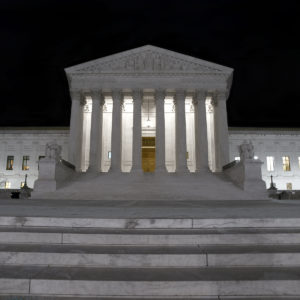This week, President Joe Biden made good on a campaign promise by signing an executive order creating a commission to examine Supreme Court reforms.
The most obvious “reform” which Biden has consistently refused to rule out is adding seats or “court-packing.”
This particular reform has a long history of being wielded as a political sword. Every discussion of court-packing includes the phrase, “the number has been nine since 1869,” but the court was actually first expanded to nine justices in 1837.
In 1866, Radical Republicans in Congress lowered the number to seven in order to guarantee that Andrew Johnson wouldn’t have the opportunity to appoint anyone. After Grant, a Republican, succeeded Johnson, Congress raised the number back to nine.
In 1937, Franklin D. Roosevelt successfully applied pressure on the court to accept his constitutionally questionable legislative agenda by threatening to add seats. Ultimately, Roosevelt’s “court reform” applied enough political pressure on the court to force much of his New Deal agenda through, and Justice Owen Roberts’ sudden ideological shift became known as “the switch in time that saved nine.” Biden himself has referred to Roosevelt’s reform strategy as “corrupt” and “a power grab.”
Another possible tactic is limiting the terms of the justices. The Washington Post editorial board suggests that term limits “would drain some of the intensity from Supreme Court politics by providing both parties with foreseeable, regular opportunities to nominate justices.”
Unfortunately, while term limits may make the political branches treat court seats with less urgency, they also invite political motivations to infect the court—something that “reform” should be designed to avoid not cause.
The entire Supreme Court is designed by the framers to ensure that it won’t function as a political branch. The framers believed that the best way to do that was to insulate the justices from all forms of political motivation.
Alexander Hamilton stated in Federalist No. 78, “If… the courts of justice are to be considered as the bulwarks of a limited Constitution against legislative encroachments, this consideration will afford a strong argument for the permanent tenure of judicial offices, since nothing will contribute so much as this to that independent spirit in the judges.”
Consider the effects of a life term: justices don’t ever have to consider elections, approval ratings, fundraising, endorsements, or their next job—all of which invite politics to motivate their behavior. If sitting on the Supreme Court isn’t going to be their final job, all of these political variables suddenly come into play.
Nothing provides a better window into how the Supreme Court functions differently than a political branch than the recent attempts to throw out election results in states that Biden won in the 2020 election.
The Supreme Court, comprised of six justices appointed by Republicans and only three appointed by Democrats, rejected all attempts to throw out state election results in 2020. In fact, Yougov polling showed that after SCOTUS rejected one of the cases, their approval fell from 72 percent among Republicans to 39 percent. Conversely, their approval among Democrats rose from 35 to 57 percent. If the justices relied on politics to keep their jobs or to set up their next jobs, they couldn’t endure a hit like that.
Meanwhile, in Congress—a political branch—there was much less willingness among Republicans to reject overturning the elections because congresspersons need to keep voters happy, raise money, and keep their jobs.
What if a justice wanted to run for office after their term? Cases might become more about pleasing potential voters than doing impartial justice.
Making the Supreme Court more like Congress isn’t reform; it’s destruction.

